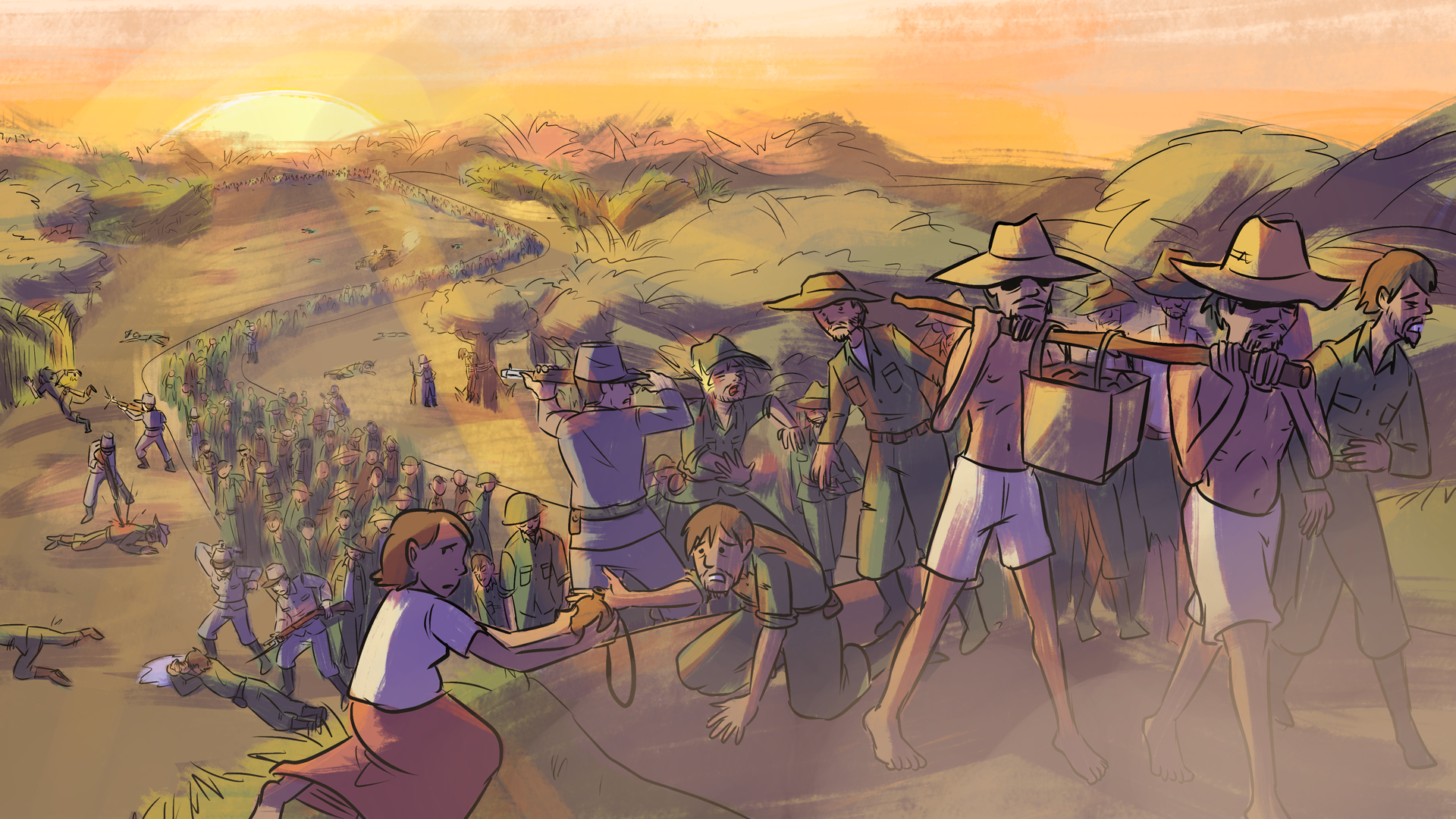The Long March

Thousands of USAFFE soldiers, American and Filipino, died on the long brutal march to the prison camps.
From the Under One Flag Online Exhibition
Chapter Two: The Crucible of War
Bataan and Corregidor
View In Section
Thousands of USAFFE soldiers, American and Filipino, died on the long brutal march to the prison camps.
From the Under One Flag Online Exhibition
Chapter Two: The Crucible of War
Bataan and Corregidor
View In Section